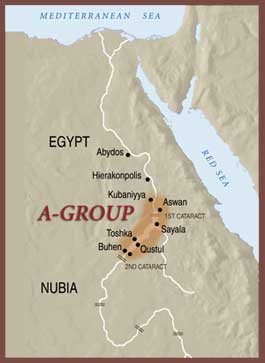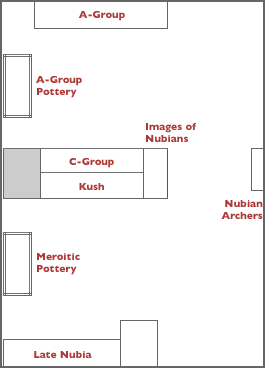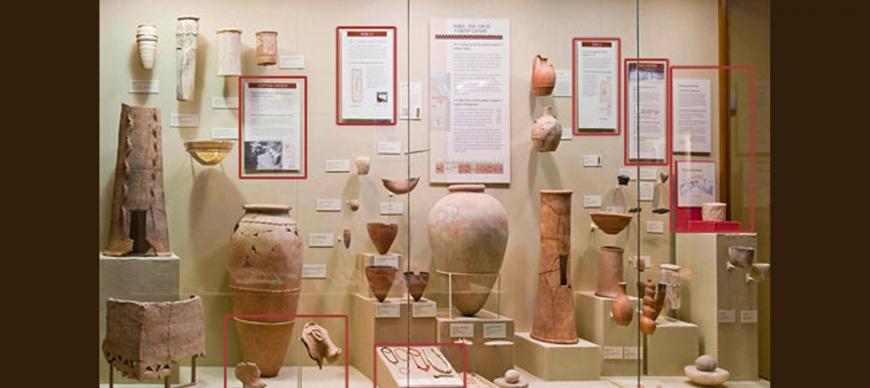The A-Group was the first powerful culture of northern Nubia
A society whose ancient name is unknown, called A-Group by archaeologists, was the earliest Nubian culture with strong rulers. Developing out of Neolithic cultures of the Nile valley, the AGroup is known largely from its cemeteries. Its burials, artifacts, and rock art are found along the Nile from Kubaniyya north of the 1st cataract to the 2nd cataract. Much of the power and wealth of the A-Group came from trade. Its location gave it access to gold from the eastern desert, carnelian from the western desert, and exotic products like incense, ivory, and ebony from farther south along the Nile. The A-Group traded these resources for Egyptian products, many contained in large storage vessels, as well as for olive oil from the Mediterranean coast.
A-Group Nubia was the southern neighbor of Egypt’s emerging state

In addition to maintaining trade contacts with Egypt, A-Group rulers employed symbols that were used by Egyptian pharaohs of that time. Some Nubian seal impressions depict a bow above a rectangle (right), probably the earliest writing of Ta-Seti, “Land of the Bow,” an ancient Egyptian name for Nubia. The A-Group flourished until it was destroyed by pharaohs of Egypt’s First Dynasty around 3100 BC. Much of northern Nubia was not inhabited for centuries afterwards, at least partly because of Egyptian military action. There is evidence of some occupation during this time, however; a settlement at Buhen near the 2nd cataract, with Egyptian and Nubian pottery, may have been a base for trade or copper working during the Egyptian Old Kingdom (2686–2125 BC).
Nubia Gallery Floor Plan



